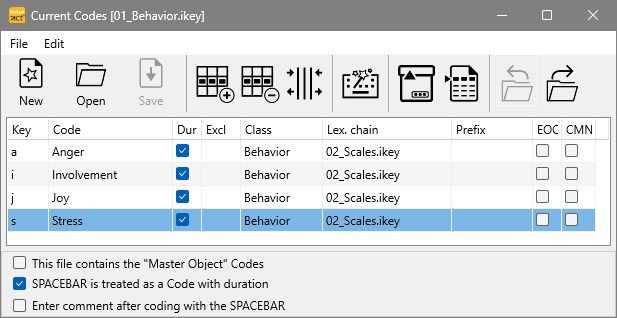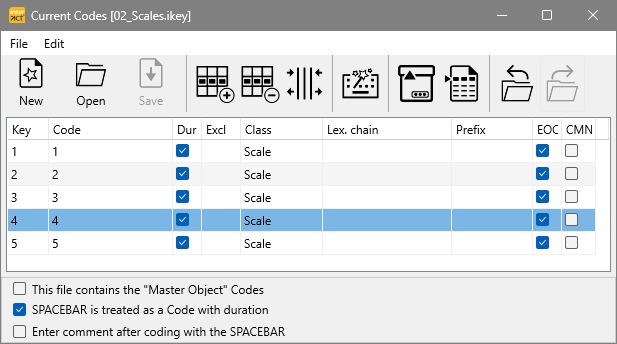This sample collects the behavior in one Class and the corresponding Scale in another. Each Event contains two Codes: Der Behavior and die Rating.
The setup is still rather simple, and gives you the overall ratings at a glance, but you need to run another routine after coding to get the results per behavior.
Code Definitions
All 'Behaviors' to be rated are entered as Codes into one single file and the numbered scales into a second file, like this:
 Top level Codes
Top level Codes Second level codes
Second level codesThe selected EOC option in the second level file ensures that you return to the top level codes automatically.
Data Logging
Coding Mode: Lexical (post hoc)
Coding Method: Event Sampling as well as Time Sampling
With those settings, your resulting data will look something like this:
Statistics
Data like this looks quite promising and offers the following statistical options:
oFrequency and Duration for each behavior, independent of their rating
oFrequency and Duration for each scale, independent of the behavior. this could give you an indication about the general temperament of the person.
oRelations between Behavior and scale, using the State-Space-Grid analysis.
oYou copy this raw data, paste it into Excel and create a Pivot table based on this data.
To get to the missing details on frequency and duration per behavior and rating within INTERACT, you need to combine the the single Codes:
•Click Transform - Codes - Move and Combine ![]() .
.
•Combine both coded Classes and enter a new Class name like Behavior_Scale as Target Class (for more details, read Move / combine codes).
This results in data like this:
Now the statistics also give you the results per behavior and scale.

